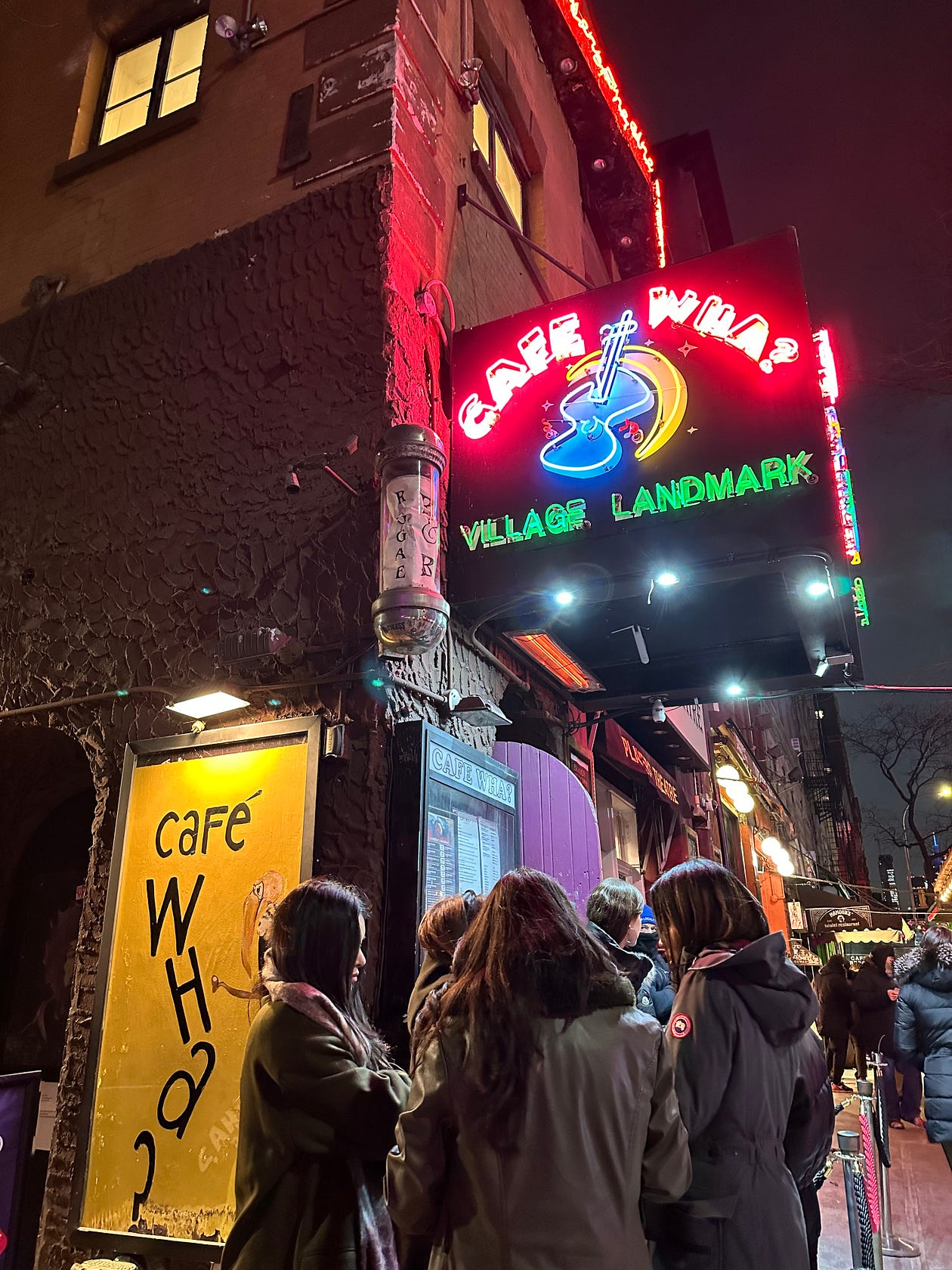CRINGE-Y MOMENTS OF OUR YOUTH
Cafe Wha? and 6th Graders Playing Hooky
An afternoon of sipping Coke + smoking Marlboros

What in sam-hell were we thinking? Me and my friends (to use the vernacular, notice I’m not writing “My friends and I”) were in sixth grade and decided to cut school one day. My best friend and I would make this clandestine outing to New York City along with two other guys.
That meant leaving the cushy suburbs of Maplewood, New Jersey to take the Erie Lackawanna train to New York City. Get off in Hoboken because the train didn’t connect to the city at that point, and grab a subway to West 14th Street.
Destination: Cafe Wha?, a joint in the West Village with live music where Bob Dylan, Jimi Hendrix, Allen Ginsberg, Bruce Springsteen, and others used to hang out. Since 1959, folk singers, artists, poets, beatniks, and anarchists have come to the club. As sixth graders, we’d fit right in.
The Problem
How to disguise myself at the town train station? My father commuted daily to the city. With an office in the renowned Empire State Building, he was an executive for Buster Brown Shoes (See “My Family’s Obsession with Buster Brown Shoes”). Which meant … what if someone he worked with, or a neighbor, caught me? What would they say?
“Isn’t there school today, Bonni?”
Or: “Aren’t you David Kogen’s daughter?” (Whereupon they would circle back to that first sentence.”)
I had the perfect disguise: my forest-green corduroy coat with a red plaid lining. The coat had a large collar that I cleverly wore folded up around my neck, a la Harriet the Spy, the circulating novel among Jefferson School fifth and sixth graders. Harriet was an eleven-year-old girl who was an aspiring writer. She observed others and wrote her thoughts down in a notebook for her future career.
But that wasn’t enough of a camouflage: I took my mother’s round sunglasses and put them on. No one would see my eyes and, therefore, not recognize me. I was sure this spy-like look would add a touch of mystery to the Maplewood train station platform at ten o’clock in the morning.
When we finally got to the city, this band of sixth graders entered Cafe Wha?. It was dank and dark. I had never seen a room painted black. Live music played. (I briefly thought of Mr. Seid, my sixth-grade teacher, and wondered what subject I was missing.)
Then came the shocker
Seventy-five cents for a Coke? Were they out of their minds? Yes, it came in a tall glass with ice, but seventy-five cents? Today, that would be like paying $5m for a drink.
I took baby sips so as not to encourage the waiter to ask if I wanted to order another one.
We spent the afternoon sitting in the dark. Listening to live house bands. Oh, did I forget to mention we smoked, too? Yes! Marlboros, or "Marbies," as we called them. To other club-goers on this mid-day, mid-week gig, we probably looked like a bunch of toddlers sitting at the bar, sipping soda and smoking cigarettes.
I can only remember not having enough money for the subway, let alone the train back to Maplewood. So we stood outside the subway, our hands out, and “grubbed” (= begged). We finally had enough change.
The other night, my husband and I walked past Cafe Wha? after leaving The Minetta Lane Theatre.
“Did I ever tell you about ‘The day I played hooky in sixth grade and went to Cafe Wha?’ story?” I asked.
Unamused, he said, “A thousand times.”







